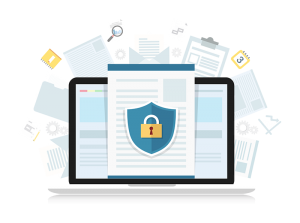New Security Demands & Requirements for Small and Midsize Businesses

As the cybersecurity landscape continues to change, we see an evolving trend of new security demands being placed on small and midsize businesses. In this first post in our Security Update Series, which covers the evolving cybersecurity landscape for small and midsize businesses, we take a look at the drivers behind the new security demands on your business.
Three Drivers for Business Security
As is typical, the demands and security requirements are coming from three directions:
- Regulation
- Cyber Insurance
- Supply Chain
Each of these three sources is increasing its expectations for your security practices and systems.
1 Regulation
As of November 2023, 12 states have enacted comprehensive data privacy laws, and 5 states have tailored information privacy laws. Other states have existing laws with similar protections that differ in implementation and enforcement. In 2023, 12 states introduced and are considering new privacy legislation. The vast majority of these laws may be enforced based on the location of the victim of a data breach. If you have customers in multiple states, you face a patchwork of legal requirements and potential liabilities. State rules extend beyond federal regulations, such as HIPAA, Sarbanes/Oxley, and SEC regulations, that may apply to your business.
Most businesses must also comply with industry regulations. If you accept credit cards, for example, you must comply with the Payment Card Industry Data Security Standard (PCI-DSS). These industry regulations often require additional policies and protections beyond federal and state regulations.
2 Cyber Insurance
Insurance carriers and underwriters base their calculations of risk through in-depth analysis of claims history and broader trends. Cyber insurance, being relatively new, does not have the same claims history as other business liabilities. As such, insurers continue to learn and adapt. Part of this learning is that cyber insurance claims are larger than previously predicted, basic security solutions often fail to provide sufficient protection, and a company’s ability to recover may be as important as its protections.
Furthermore, insurers are actively holding customers accountable for the statements made on applications, questionnaires, and audits. In 2022, Travelers Property Casualty Company of America sued International Control Services Inc. (ICS) in the U.S. District Court for the Central District of Illinois (Case No. 22-cv-2145). ICS stated that multi-factor authentication (MFA) was in place. The forensics investigation following a ransomware attack determined that MFA was not in place. Travelers claimed and maintained that the misrepresentation “materially affected the acceptance of the risk and/or the hazard assumed by Travelers.” The parties settled with cancellation of the payout, leaving ICS uncovered for any costs or damages.
While some insurers attempted to mandate specific security solutions or products, most insurers are now looking to verify a much broader range of security infrastructure. Beyond endpoint protection and MFA, insurers are using their growing understanding to set broader expectations. Security activities such as internal and external penetration testing, collection and analysis of security and activity logs, and the availability of business continuity solutions are starting to appear on cyberinsurance applications. Many insurers are also starting to request third-party validation and benchmarking against security frameworks, making streamlining security for SMBs even more important.
3 Supply Chain
If you provide products or services to businesses, you are in their supply chain. Governmental and industry regulations applicable to your customers will create new requirements for your business. The supply chain effect is not new. Organizations bound by HIPAA demand require a Business Associate Agreement (BAA) from suppliers. Sarbanes/Oxley, SEC regulations, and others include requirements that businesses must validate levels of compliance from suppliers and vendors. The same is becoming a reality for cybersecurity. As businesses develop their cybersecurity programs, they want and need to ensure their supply chain is equally secure. Cyberinsurance, industry regulations, and government regulations are starting to require this level of diligence.
As a smaller business, your customers may begin with changes to confidentiality and non-disclosure terms in your contracts related to the use of Artificial Intelligence (AI) tools and services. You may be asked to conform to a specific security framework. You may be asked to confirm and attest to a set of security practices. Businesses that do not comply risk litigation and losing customers.
What to Do:
The first step is to not panic. These changes will surface over time.
Start with making sure your basic security services are in place. Complete our Rapid Security Assessment for a quick review of your current, basic security infrastructure. We will also provide recommendations specific to your business and needs.
Our Security CPR Managed Security services deliver an affordable, effective, security solution that helps you meet current expectations. These services integrate well with our Managed Cloud Services and can be implemented quickly and affordably.
To learn more or to discuss your options in more detail, please contact us or schedule time with one of our Cloud Advisors.
And, continue to follow our blog for Security Update Series posts for more information and ideas.
About the Author
 Allen Falcon is the co-founder and CEO of Cumulus Global. Allen co-founded Cumulus Global in 2006 to offer small businesses enterprise-grade email security and compliance using emerging cloud solutions. He has led the company’s growth into a managed cloud service provider with over 1,000 customers throughout North America. Starting his first business at age 12, Allen is a serial entrepreneur. He has launched strategic IT consulting, software, and service companies. An advocate for small and midsize businesses, Allen served on the board of the former Smaller Business Association of New England, local economic development committees, and industry advisory boards.
Allen Falcon is the co-founder and CEO of Cumulus Global. Allen co-founded Cumulus Global in 2006 to offer small businesses enterprise-grade email security and compliance using emerging cloud solutions. He has led the company’s growth into a managed cloud service provider with over 1,000 customers throughout North America. Starting his first business at age 12, Allen is a serial entrepreneur. He has launched strategic IT consulting, software, and service companies. An advocate for small and midsize businesses, Allen served on the board of the former Smaller Business Association of New England, local economic development committees, and industry advisory boards.


 What Is Google Vault?
What Is Google Vault? Given the demand and need to improve your protection from the devastating impact of ransomware, crypto attacks, and other forms of cyber attacks we are extending the Advanced Threat Protection Priority Opt-in discount period through March, 2020. We understand that adding a service, even a critical service, impacts your budget and costs. Our Priority Opt-In discounts, and other measures (see below), intend to minimize the impact.
Given the demand and need to improve your protection from the devastating impact of ransomware, crypto attacks, and other forms of cyber attacks we are extending the Advanced Threat Protection Priority Opt-in discount period through March, 2020. We understand that adding a service, even a critical service, impacts your budget and costs. Our Priority Opt-In discounts, and other measures (see below), intend to minimize the impact.
